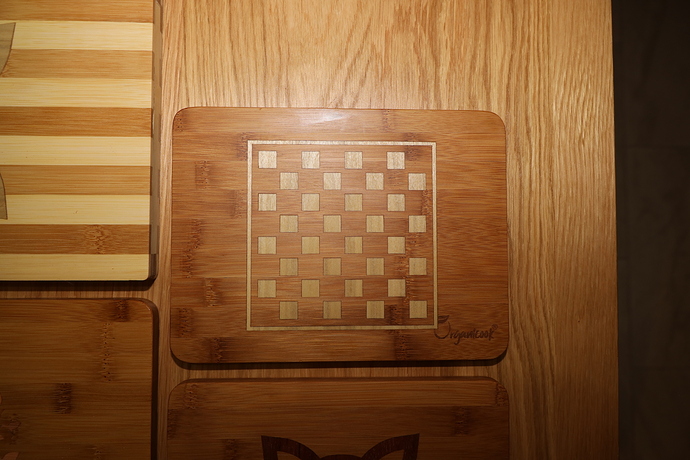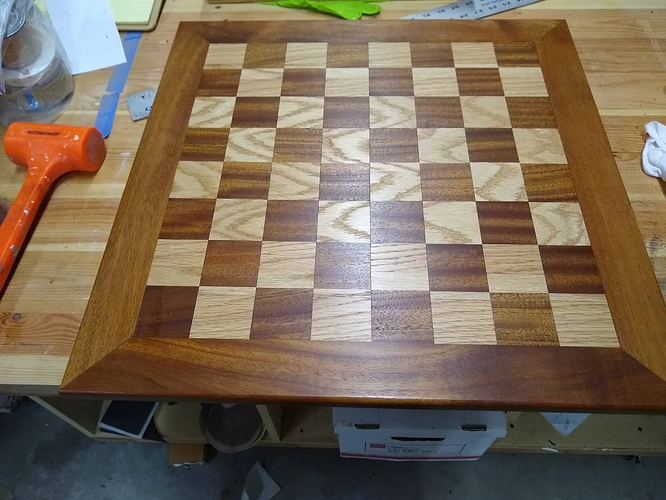Hello im wondering what would be a good bit to use to make a perfect 90 degree square pocket, im going to be making a chess board and for the lighter squares i wante to router them out and inlay them with a different type of wood so the corners need to be perfect
V-carving using a V-bit is the only way to make perfect corners (with no manual touch up, that is), and is quite appropriate to make inlays
really didnt think a v carve bit could make a perfect 90 like a quarter inch deep
You can’t make a deep “straight” pocket with square corners, so the V-carving thing is the closest option. If you make an inlay, depth does not matter anyway
Julien’s suggestion is reasonable since he is marvellously clever 
Since the bits are round, there is no way to make a true corner in a pocket. So a VBit is required to get the corners as sharp as possible, but by sacrificing depth of the pocket.
One alternative is not to think of the chess board as a series of pockets and inserts/inlays, but a collection of squares of two types of wood.
Since you can cut a square perfectly with a profile cut (the bit overcuts into waste wood to give you a sharp corner), you can cut 32 squares of wood A, and 32 squares of wood B, and pack them in a frame (maybe of wood C).
Ultimately it will depend on whether depth of wood is important. If not, the various inlay techniques give a visible ‘perfectly square’ corner at the surface, with the taper ‘hidden’ in the cavity in the mother part.
The attached pic is an inlay. If this technique gives you what you are after, there are many posts and articles on here to help get started. If not, then you’ve got to think how to combine ‘outside cuts’ as @Gerry mentioned.
Well I have a slab or dark walnut that will be the dark squares so not routering them out, just need to router the white squares out and fill them with maple I would like to get a quarter to half inch deep so there’s no way of doing this
No. The closest option would be using a small diameter endmill to at least have small radius corners, and then using a chisel to make corners perfectly square manually (but over a full chessboard…it could take a while)
If you design the board so that the sides of the inlayed squares are not visible you will be able to get a square appearance at the surface using the V carving inlay technique described at:
I have made several chess boards. Individual pieces are usually a disaster. The best method I found to make a chess board field is to cut strips of each material the width you want, I used 2 inches. Then glue the strips together in alternating rows. Then trim the glue up on one edge and cut out the width across the field making a row of alternating contrasting wood. Then glue the strips together to make a chess board field.
Every attempt to make individual pieces and glue them together has ended with less than satisfactory results for me. Getting 64 pieces the exact same size and then even if you get them the same size gluing up 64 pieces something always moves a little and that makes your chess board field not look right.
This chess board was made with oak and mahagoney and was made with the alternating strips cut into rows and then glued together on a plywood base. Be careful you dont make the squares too thick. Wood moves and if the pieces are too thick they can come loose after repeated movement over the years.
This topic was automatically closed after 30 days. New replies are no longer allowed.

